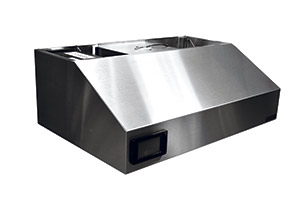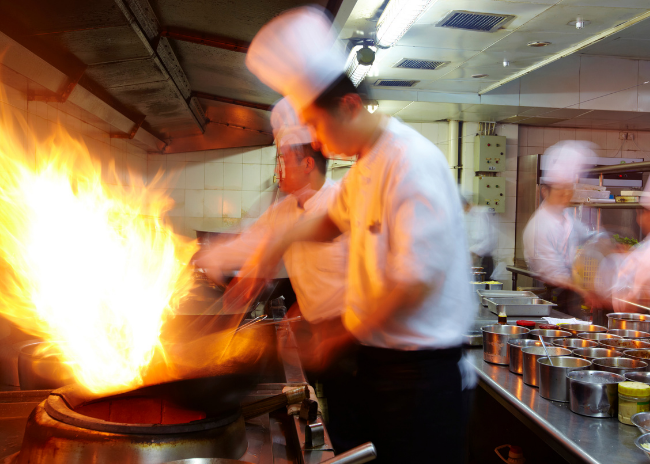Every kitchen has one, at least, and every kitchen needs to maintain them. Here are a few tips for keeping a ventilation system in good working order.
Key safety components of almost any commercial kitchen, ventilation equipment includes hoods, fire systems, pollution control units, grease extraction devices, controls, exhaust and makeup air systems.
Kitchen ventilation systems are used in commercial cooking applications to remove cooking heat and effluent. Professionally sized and installed, components include stainless-steel exhaust hoods, exhaust fans, makeup air units, grease removal apparatuses, fire-suppression systems and controls.
Maintenance for ventilation systems depends upon the type and volume of cooking as well as local codes. The menu, volume and type of unit also will impact how often ventilation systems should be cleaned and how frequent maintenance will be necessary.
Ventilation system design depends on how the foodservice operation utilizes the kitchen space and arranges the equipment. When looking at location, consider the balance of air and the placement of vents, and ensure that not too much air will blow on prepared food.
Ventilation systems situated over cook lines remove cooking heat, effluent and odors. This engineered system includes several components, but exhaust hoods are typically placed over the cook line and in the dishwashing area. The size and shape vary depending on the equipment underneath. Consider federal and local codes when specifying this equipment.
Featured Products
-

Fire Ready Hood System
Accurex
The Fire Ready Hood system’s enhancements provide an integrated fire protection system in a smaller footprint that can replace the need for a commercial Type 1 wall canopy hood, according to the maker. Loose accessories are plug and play, and no welded grease duct is necessary. An electronic fire detection system installs easily and has an electronic remote pull.
Related Articles
-
What to Consider When Purchasing a Faucet
Read FeatureFaucets are an obvious necessity in commercial kitchens, and foodservice operators can choose from a variety of types, including units designed for handwashing, prerinsing of dishes and various cleaning jobs.
-
What to Consider When Purchasing a Disposer
Read FeatureNot following manufacturers’ recommendations when selecting a disposer can result in an inadequate system that will not meet the operation’s waste needs. Because most operations become more dependent on these systems than anticipated, it is better to go bigger in terms of horsepower to ensure the waste amount can be accommodated.












